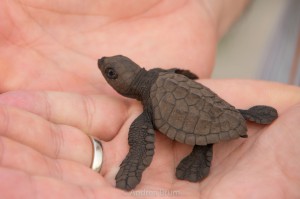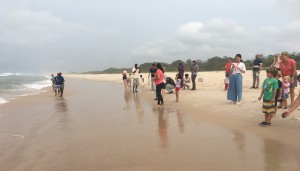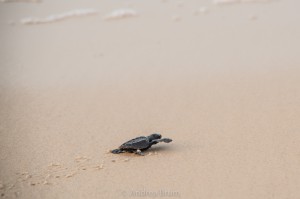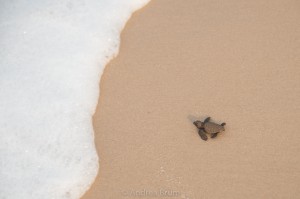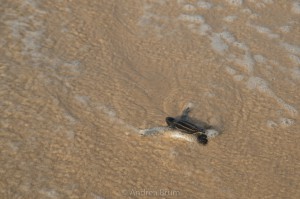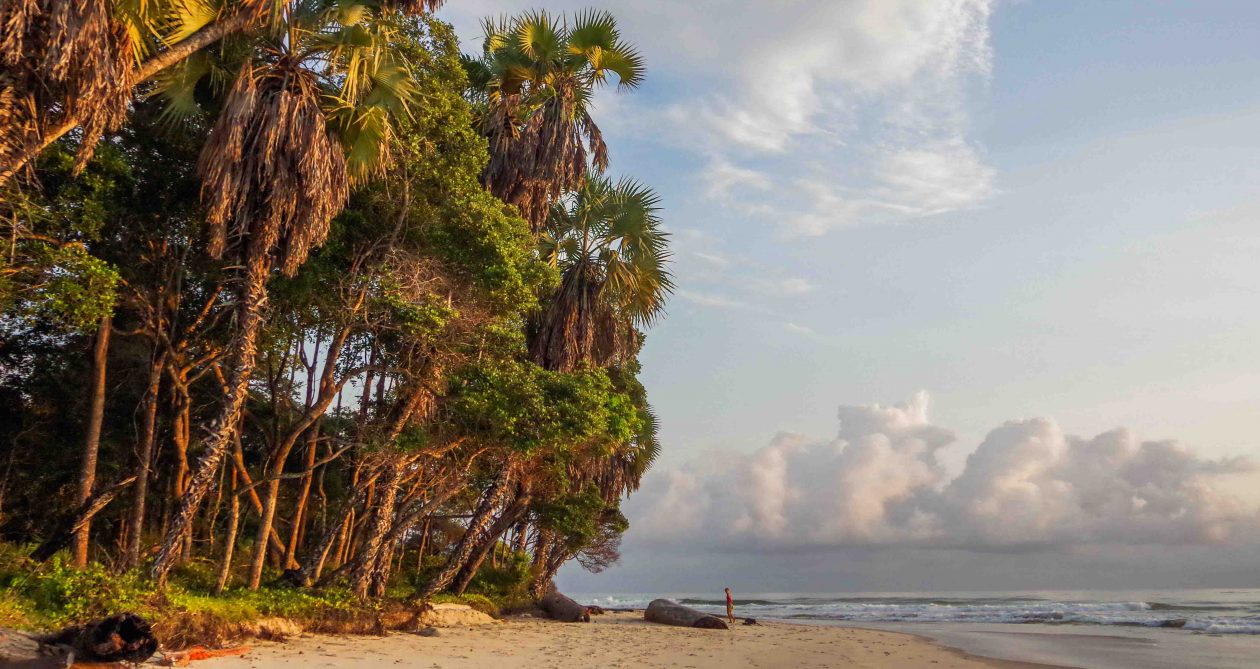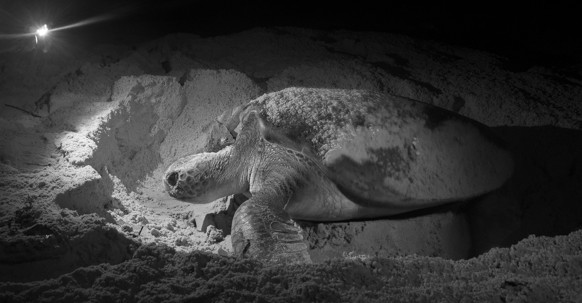Four species of sea turtles occur in Gabon: leatherbacks, green turtles, olive ridleys and hawksbills. All of these species are in danger of extinction worldwide, with their numbers are declining sharply.
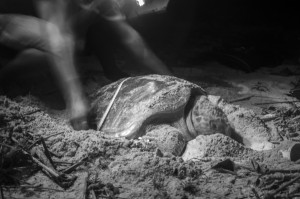 Every year between October and January female sea turtles make their way to their birth place on the beaches of Gabon to lay their eggs. Gamba is one of their prime nesting sites and we have the opportunity to join local researchers on their nightly walks to monitor the beaches for nesting turtles.
Every year between October and January female sea turtles make their way to their birth place on the beaches of Gabon to lay their eggs. Gamba is one of their prime nesting sites and we have the opportunity to join local researchers on their nightly walks to monitor the beaches for nesting turtles. 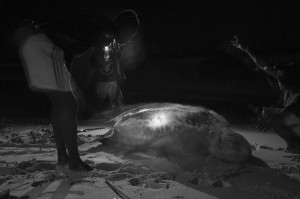 As the turtles only lay their eggs at night the walk along the beach (that is home to a variety of other nocturnal animals including elephants and hippos) doesn’t begin before 9pm. And because the bright white light of a flashlight may confuse the turtles this is done
As the turtles only lay their eggs at night the walk along the beach (that is home to a variety of other nocturnal animals including elephants and hippos) doesn’t begin before 9pm. And because the bright white light of a flashlight may confuse the turtles this is done
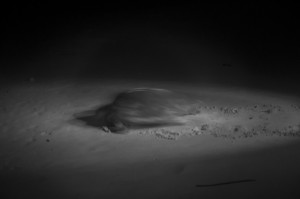 mostly with just the light of the moon and the stars. It’s actually very fun, if you don’t mind walking up to 12 kilometers in sand, and you actually get to see a turtle (mother nature doesn’t always/usually cooperate 😉 ).
mostly with just the light of the moon and the stars. It’s actually very fun, if you don’t mind walking up to 12 kilometers in sand, and you actually get to see a turtle (mother nature doesn’t always/usually cooperate 😉 ).
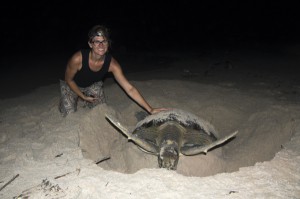
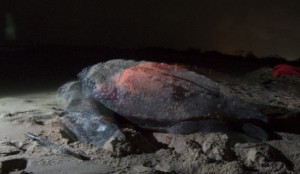 Females lay around 50-100 eggs in each nest. During oviposition (the name for the process of laying the eggs), the turtle enters a kind of trance and is insensitive to disturbance. During this time it is safe to approach a nesting turtle to observe her quietly and take some pictures. This is also when the researchers measure the length of the turtles and put a tag on them (if they don’t already have one) for identification and tracking.
Females lay around 50-100 eggs in each nest. During oviposition (the name for the process of laying the eggs), the turtle enters a kind of trance and is insensitive to disturbance. During this time it is safe to approach a nesting turtle to observe her quietly and take some pictures. This is also when the researchers measure the length of the turtles and put a tag on them (if they don’t already have one) for identification and tracking.
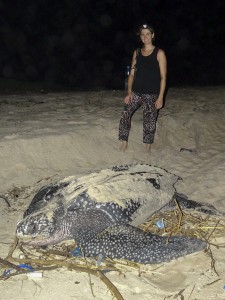 Gabon has the largest population of nesting Leatherbacks in the world! These turtles are the largest of the sea turtle species and also the most unique-looking. They have a soft leathery shell with longitudinal ridges and white spots. A full grown adult can measure over 180 cm in length! Last year during a turtle walk with friends I saw one and as you can see from the photos, it was massive!
Gabon has the largest population of nesting Leatherbacks in the world! These turtles are the largest of the sea turtle species and also the most unique-looking. They have a soft leathery shell with longitudinal ridges and white spots. A full grown adult can measure over 180 cm in length! Last year during a turtle walk with friends I saw one and as you can see from the photos, it was massive!
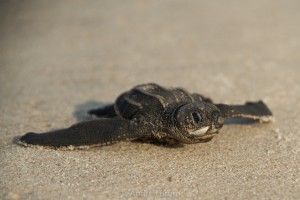
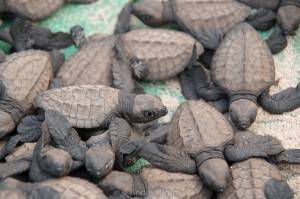 After the female lays the eggs and returns to the sea, the nest incubates for approximately two months, buried in the sand. Due to the fact that the sea turtles are endangered the researchers in Gamba have set up a turtle nursery where they
After the female lays the eggs and returns to the sea, the nest incubates for approximately two months, buried in the sand. Due to the fact that the sea turtles are endangered the researchers in Gamba have set up a turtle nursery where they  move nests to if they feel that the nest was laid in an area that endangers the eggs (such as in tracks cars drive on). When these eggs hatch sometimes local residents are lucky enough to be invited to see the baby turtles and carry them down to the water to be released in the ocean. It’s an incredible experiance to see and touch these tiny, beautiful babies.
move nests to if they feel that the nest was laid in an area that endangers the eggs (such as in tracks cars drive on). When these eggs hatch sometimes local residents are lucky enough to be invited to see the baby turtles and carry them down to the water to be released in the ocean. It’s an incredible experiance to see and touch these tiny, beautiful babies.
